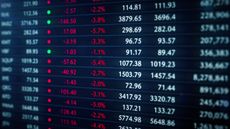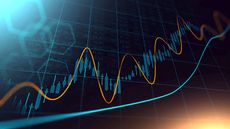10 Bond Funds to Buy Now
Bond funds have seen sizable losses so far this year, but yields are now rising to attractive levels for income-starved investors.
- (opens in new tab)
- (opens in new tab)
- (opens in new tab)
- Newsletter sign up Newsletter

Bonds have been behaving badly. But the fixed-income market's comeuppance is a good thing for investors looking for better value and more income from their bond funds.
Historically, bonds have offered shelter for portfolios when financial storms touch down on Wall Street. But bonds have not been a haven this year in the grip of surging inflation and fast-rising interest rates. Instead, fixed-income assets ranging from U.S. Treasuries to higher-yielding "junk bonds" have logged double-digit-percentage losses resembling declines suffered by more-volatile stocks.
"A 10% drawdown in the stock market is common, but it is unprecedented for the bond market," says Lawrence Gillum, a fixed-income strategist at LPL Financial.

Sign up for Kiplinger’s Free E-Newsletters
Profit and prosper with the best of expert advice on investing, taxes, retirement, personal finance and more - straight to your e-mail.
Profit and prosper with the best of expert advice - straight to your e-mail.
The bond market pain meter highlights this year's outsize declines and pokes a hole in the myth that bonds never lose money. The Bloomberg U.S. Aggregate Bond index, which tracks the investment-grade bond market and serves as the benchmark for most bond funds, has fallen 10.6% so far this year through July 8 – putting it on track for its worst annual return ever. (Its worst year up to now was 1994, when it fell 2.92%.)
U.S. Treasuries with maturities of 10 years or more have taken an even bigger hit, tumbling 22.5%, according to the Bloomberg U.S. Long Treasury Total Return index. And high-yield junk bonds – those rated BB or lower, with a higher risk of default – have fallen 12.9%.
Bond experts have been surprised by the swift and steep drop in bond prices, causing yields, which move in the opposite direction, to spike sharply higher. "No, it's not normal at all," says Andy McCormick, head of global fixed income at fund company T. Rowe Price.
The Fed Gets Tough With Aggressive Rate Hikes
As inflation surged to 40-year highs, it forced the Federal Reserve to try to tame skyrocketing prices with aggressive interest rate increases, reversing the cheap-money policy in place since March 2020, when the Fed cut its key short-term interest rate nearly to zero to boost the economy at the start of the COVID-19 pandemic. The central bank began raising rates in March of this year, and it surprised markets in June with a three-quarter of a percentage point hike, the biggest since 1994. And rates may be heading even higher.
But amid all the gloom in bond-land, there are rays of sunshine peeking through the clouds, says LPL's Gillum. "We think the worst is behind us," he says. The valuation and yield on all types of bonds, he says, look much better today than at the start of the year.
Just as stocks go on sale in a bear market, bonds have moved from the full-price aisle to the discount bin. That doesn't mean rates can't move even higher if inflation stays hot. But keep in mind that the forward-looking bond market has already pushed interest rates significantly higher to account for coming Fed increases. "Markets have already priced in a pretty bad scenario," says Elaine Stokes, executive vice president and portfolio manager at investment firm Loomis Sayles.
The 10-year Treasury note recently yielded just over 3%, more than double the rate at the end of 2021. And a two-year Treasury yields a smidge more than that, up from 0.73% on Dec. 31.
If you're eyeing even more income, high-yield bond yields recently hit 8.5%, compared with 4.35% at the end of last year; corporate bond yields hit almost 5%, versus 2.35%, according to ICE/Bank of America indexes tracked by the St. Louis Fed. The yield on the Agg is now nearing 4%, up from 1.75%. The higher yields, which provide some cushion if bond prices dip further, spell opportunity for investors whose portfolios now have low weightings in bonds.
"Now is an opportune time to reallocate money into fixed income," says Gillum, adding that higher yields mean bonds can once again perform their role as an equity buffer and portfolio diversifier.
Higher yields make the starting point far more attractive for investors who are putting new money to work, says Mary Ellen Stanek, co-chief investment officer and bond fund manager at money management firm Baird Advisors. "The higher yields going forward are pretty powerful," says Stanek. They "may just be the retirement gift that boomers have been looking for."
After years of accepting piddly yields, or taking on more risk to earn decent income by buying the debt of less financially strong companies or dividend-paying stocks, investors can now earn a healthy coupon from fixed-income holdings, something they've craved for years.
Yields have moved up so fast that conventional measures – such as 30-day SEC yields, which use yields over the past 30 days to extrapolate an annual yield and are commonly used to compare funds – are lagging real-time yields, fund managers say. (Fund yields here are 30-day yields.)
It's Not an All-Clear for Bond Funds
The bond market's troubles may not be over. We could see a more severe economic contraction, or the Fed may need to hike rates even more than the market expects.
That murky outlook is why Michael Fredericks, manager of BlackRock Multi-Asset Income fund, is not advising investors to bet on bonds "with all your chips" just yet. Stokes, of Loomis Sayles, offers this advice: "I wouldn't go all-out. I'd start tiptoeing in."
We offer some ideas for income investors to consider, below. (Prices and other data are as of July 8; some yields, as of June 30.)
Short-Term Bond Funds
Conservative investors should consider short-term bond mutual and exchange-traded funds, which are less sensitive to future interest rate increases and now sport plump yields. "If yields of 3% to 3.5% are what you're looking for, short-term Treasuries have become a lot more attractive," says Stokes. And with shorter-term corporate bonds, "the default risk is very low," says Fredericks.
To gain exposure to Treasuries that mature in one to three years, consider the Vanguard Short-Term Treasury ETF (VGSH (opens in new tab), $59, yield 3.05%), which sports a rock-bottom expense ratio of 0.04%. You'll get an additional percentage point of yield with the Vanguard Short-Term Corporate Bond ETF (VCSH (opens in new tab), $76, 4.09%), which owns investment-grade debt of companies such as Boeing (BA (opens in new tab)) and Microsoft (MSFT (opens in new tab)) that will mature in one to five years.
Core Bond Funds
Spread your bets around, the bond pros say. And stick with high-quality and short- to intermediate-term bonds (ones that mature in three to 10 years) that offer competitive yields with less credit and interest rate risk than dicier fare, says Rob Haworth, senior investment strategist at U.S. Bank Wealth Management.
With more volatility expected, given the uncertain outlook, a good strategy is to invest in a diversified fund benchmarked to the broad Agg index, which includes investment-grade U.S. Treasuries, corporate bonds and mortgage-backed securities. "Higher-quality corporates and U.S. Treasuries can withstand economic distress," says Haworth.
The Baird Aggregate Bond (BAGSX (opens in new tab), 3.44%), a team-run fund that takes a disciplined, long-term approach that eschews big bets, is a good choice. The fund's 1.79% annualized gain over the past 10 years has outpaced 82% of its peers, according to fund tracker Morningstar. At last report, nearly 60% of the fund's assets were invested in AAA bonds, with corporates making up the biggest part (39%) of the portfolio. Passive investors might like the iShares Core U.S. Aggregate Bond ETF (AGG (opens in new tab), $101, 3.28%), which has a low expense ratio of 0.03%.
Intermediate-Term Investment-Grade Bond Funds
Most Wall Street pros say if a recession does hit, it will be a shallow one. And that means fewer companies will run into financial trouble and be at risk of defaulting on their debt. What's more, investment-grade companies entered the bear market in strong financial shape, which will help them weather a downturn, says Baird's Stanek. "There's decent value there," she says.
Consider the SPDR Portfolio Short Term Corporate Bond ETF (SPSB (opens in new tab), $30, 3.84%), which has 92% of its assets in debt rated A or BBB, in companies such as investment bank Credit Suisse (CS (opens in new tab)) and drugmaker Bristol-Myers Squibb (BMY (opens in new tab)). Or consider the Fidelity Investment Grade Bond (FBNDX (opens in new tab), 3.59%), an actively managed fund that has topped 96% of its peers over the past five years.
Municipal Bond Funds
Investors looking to trim their tax bill will also find value in municipal bond funds. The main attraction of munis, issued by state and local governments, is that interest income is free from federal taxes – and if the bonds are issued in the state you live in, they're free from state taxes, too. The rapid rise in muni bond yields in anticipation of Fed rate hikes has made their tax-adjusted yields even more attractive. It's possible to get tax-equivalent yields approaching 7% in some states, according to a report from Baird Funds.
For broad exposure to state and local munis, look at the Vanguard Intermediate-Term Tax-Exempt Bond (VWITX (opens in new tab), 2.80%). The fund delivers a tax-equivalent yield of 4.44% for an investor in the highest federal tax bracket of 37% (not including surcharges), or a 3.68% tax-equivalent yield for taxpayers in the 24% bracket. The fund is actively managed, with an average credit rating of AA-minus; Morningstar calls it "one of the best muni market exposure offerings."
The Fidelity Intermediate Municipal Income (FLTMX (opens in new tab), 2.55%) is a member of the Kiplinger 25, the list of our favorite actively managed mutual funds. It has bested 86% of its peers in the past year. The fund has a tax-adjusted yield of 4.05% for someone in the 37% bracket and 3.36% for a taxpayer in the 24% bracket.
High-Yield Bond Funds
Investors willing to take on more risk to earn fatter yields should consider high-yield bonds, issued by firms with less-than-stellar financials, says BlackRock's Fredericks. If the consensus view is correct that a recession, if we get one, won't be severe, it's unlikely junk bonds will see a big increase in defaults, which takes some risk off the table. Fredericks says investors are receiving ample compensation for the risk, given that the average junk-bond yield has more than doubled since the start of the year. A solid choice is the Vanguard High-Yield Corporate (VWEHX (opens in new tab), 6.66%), a Kip 25 member as well as a top Morningstar pick for "cautious high-yield bond exposure."
To capitalize on rates that could move even higher, Fredericks recommends bank-loan funds that own floating-rate debt. If rates go up, you'll earn a higher yield on the loans. The T. Rowe Price Floating Rate (PRFRX (opens in new tab), 4.43%), a member of the Kiplinger 25, is a good choice.
-
-
 Three Legal Documents Your Child Should Sign When They Turn 18
Three Legal Documents Your Child Should Sign When They Turn 18Legal documents such as durable power of attorney, a healthcare proxy and a HIPAA release can give parents the legal right to make decisions if their child needs help.
By Allen J. Falke, CPA, Esq., LL.M. • Published
-
 JetBlue's TrueBlue Loyalty Program Now Gives Perks to Infrequent Flyers
JetBlue's TrueBlue Loyalty Program Now Gives Perks to Infrequent FlyersJetBlue's TrueBlue loyalty program added new tiles and Mosaic levels to offers more ways for casual travelers to earn perks more regularly.
By Collette Reitz • Published
-
 High Yields From High-Rate Lenders
High Yields From High-Rate LendersInvestors seeking out high yields can find them in high-rate lenders, non-bank lenders and a few financial REITs.
By Jeffrey R. Kosnett • Published
-
 Time to Consider Foreign Bonds
Time to Consider Foreign BondsIn 2023, foreign bonds deserve a place on the fringes of a total-return-oriented fixed-income portfolio.
By Jeffrey R. Kosnett • Published
-
 Best Defensive Stocks to Buy Now
Best Defensive Stocks to Buy NowInvestors are concerned about the financial sector and the economy, but these best defensive stocks have risk-averse traits that can help calm those fears.
By Mark R. Hake, CFA • Published
-
 Stock Market Today: Markets Up Again as Bank, Energy Stocks Outperform
Stock Market Today: Markets Up Again as Bank, Energy Stocks OutperformThe major indexes closed higher for a second straight day ahead of tomorrow's highly anticipated Fed decision.
By Karee Venema • Published
-
 Five Investment Strategies to Focus on in 2023
Five Investment Strategies to Focus on in 2023Planning instead of predicting, reducing allocations of illiquid assets and having a diversified portfolio are good ways for investors to play defense this year.
By Don Calcagni, CFP® • Published
-
 Stock Market Today: Stocks Rise Ahead of Fed
Stock Market Today: Stocks Rise Ahead of FedBank headlines dominated another choppy day of trading on Wall Street.
By Karee Venema • Published
-
 Stock Market Today: Stocks Fall After First Republic Bank Suspends Dividend
Stock Market Today: Stocks Fall After First Republic Bank Suspends DividendThe embattled lender's dividend cut was just the latest sign of instability in the banking industry.
By Karee Venema • Published
-
 Stock Market Today: Markets Rise as Bank Stocks Bounce
Stock Market Today: Markets Rise as Bank Stocks BounceInvestors also focused on the February CPI report, which gave a mixed picture on inflation.
By Karee Venema • Published









